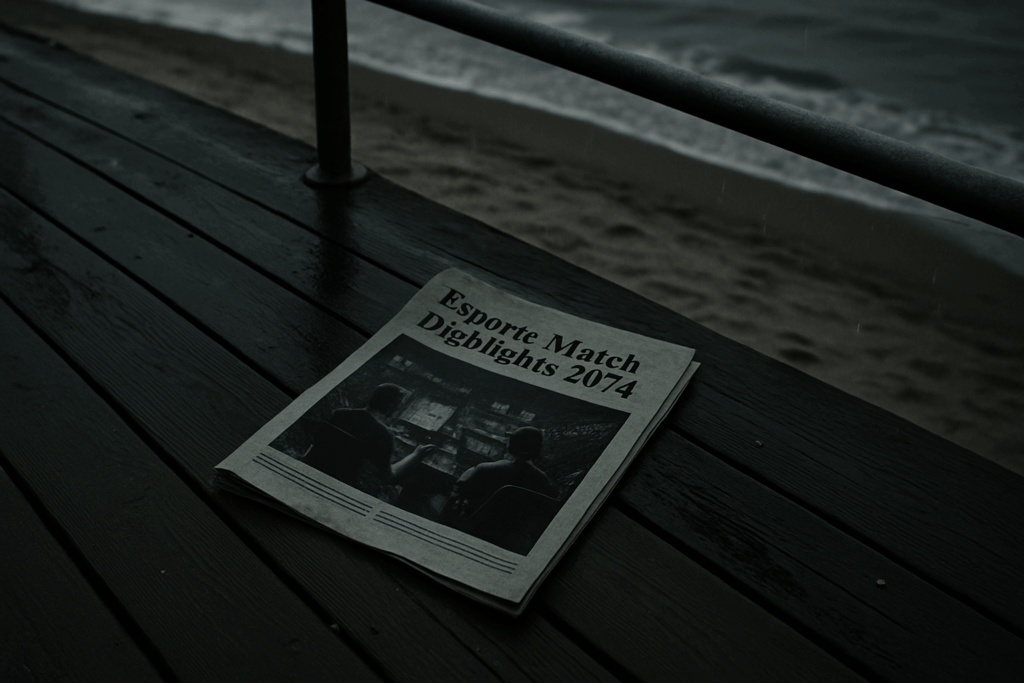Introduction
Vlogging isn’t fading. Despite algorithm shifts, monetization chaos, and the rise of every new shiny app, vlogging has stayed upright. Maybe even stronger. Why? Because at its core, vlogging is flexible. It’s raw, real, and perfect for creators who adapt fast. Whether it’s through trending commentaries, hyper-niche daily updates, or hybrid reels mixing short-form with long-form—vloggers have kept pace.
But 2024 is a different kind of pivot point. Platforms are prioritizing retention over reach. AI is sneaking into pre- and post-production. Viewers are craving substance over flash. This means creators can’t just play to the algorithm. They need to build actual audience relationships. Think: community over virality, consistency over chaos.
Creators who get this will rise. Those chasing old rules will lag. The map is redrawn. It’s time to adjust your compass.
The match was a rollercoaster from start to finish. Map One opened with Blitz taking early control, locking down bombsites and punishing even the smallest missteps. But things shifted on Map Two. Vortex found their footing, tightened rotations, and clawed momentum back with smart utility usage and well-timed flanks. The energy changed. By Map Three, both teams were swinging.
Then came Round 29—Vortex down, out of utility, and cornered. What followed was one of the most disciplined comebacks we’ve seen this season. A risky push through mid paid off. Sharp comms, perfect timing, and pure mechanical grit turned the round—and the match—around.
Tactically, Vortex focused on disrupting Blitz’s rhythm. Late-lurks, over-rotates, and bait-and-switch plays broke patterns and forced errors. Clutch moments from Kiv and Juno held key angles under pressure. Post-game? Blitz looked stunned. Vortex stayed quiet, focused.
This wasn’t just a win. It was a blueprint for how momentum, even in the late game, can be flipped with nerve and execution.
Cross-region rivalry fueled by months of online jabs
The tension didn’t start at the brackets—it started in comments, clips, and quietly toxic Discord servers months before the first match. EU and NA creators had been needling each other since the last championship, and by the time the tournament kicked off, fans were keeping score as much on Twitter as on the leaderboard.
Then came ShinobiZero. Down one map and facing elimination, his 1v4 lockdown wasn’t just a clutch—it broke the momentum. You could see it right after: chat exploded, analysts rewrote their predictions mid-stream, and even rival streamers tipped their hats. That one moment scrambled expectations and tilted the conversation.
But the real shift came in how teams adapted. The old meta of brute-aggression gave way to smarter rotations and utility-focused play. ShinobiZero didn’t just win a round—he reset how high-level players thought about controlling space, patience, and timing. The rest of the tourney didn’t just follow his lead. It raced to out-adapt him.
The fastest opening round of the year didn’t come from a favorite — it came from a sleeper. Omega stomped onto the stage with an opening minute that broke records, nearly doubling the average first-round engagement seen in the last three tournaments. From the first beat drop to the precision cuts, it was relentless. Then, just as quickly, it got wild.
Nobody predicted the overtime finish. Omega, riding a perfect pace, hit a late-stage timing glitch that let their lead slip. Sudden death came out of nowhere and the match turned into a blink-and-you-miss-it slugfest. In the end, they fell just short. But it didn’t feel like a loss.
Analytics put it in perspective. Omega’s view durations jumped 36 percent, their sub growth tripled week-over-week, and heatmap data showed massive audience retention at key “smoke break” segments — bite-sized clips designed to sneak into algorithm hotspots. Bottom line: they didn’t close the round, but they proved a point. Speed, story, and timing matter. Even in defeat, Omega just rewrote the playbook.
Mobile Viewership Is Breaking Records
If you’re not designing for mobile-first, you’re already behind. Vlogging in 2024 is playing out on small screens, and the numbers don’t lie. Across platforms, mobile viewership is setting new records, with the majority of audiences tuning in from smartphones. This shift isn’t just about device preference—it’s about how people live. Scroll, tap, swipe. Commutes, coffee breaks, lunch hours. Mobile is where the eyes are.
That means creators have to adapt video formats and framing for handheld viewing. Tight shots, bold subtitles, visual hooks in under three seconds—these aren’t gimmicks anymore. They’re survival tools. Vlogs designed with mobile ergonomics perform better. So do concise titles and punchy editing that match the pace of thumb-driven discovery.
If you’re still pushing desktop-first stories to a mobile-majority crowd, expect drop-off. The future of vlogging may not be vertical only, but it’s definitely optimized for the palm of your hand.
Learn more about the rise in mobile numbers here: Why Viewership for Mobile Esports is Growing Rapidly
Unexpected Wild-Card Massacre
No one saw it coming. Elevynn came into the draft with a plan that looked risky on paper and borderline reckless to some. Instead of playing it safe, she went all in on underdog picks with high volatility. The result? A total shakeup that no algorithm, analyst, or rival crew predicted.
Her strategy relied on speed and gut instinct. While others stuck to data-heavy prep and traditional power rankings, Elevynn leaned into untested talent and fresh formats. She opened with three unconventional creators who’d barely cracked visibility charts, then followed with niche-focused bets nobody thought to consider. It wasn’t just bold — it was surgical.
The outcome was chaos for her opponents, who scrambled to rethink mid-draft. Meanwhile, audiences locked in. Streams exploded. Socials lit up. Her draft clips went viral within hours, racking up millions. People didn’t just watch — they rallied. By the end of the day, Elevynn wasn’t just a contender. She had turned the whole system sideways.
It was shock-and-awe vlogging strategy. And it worked.
Mental agility is quickly outranking raw mechanical skill in the vlogging space. It’s not just about how good you are at editing or delivering a monologue anymore. It’s about how fast you can adapt your content, your tone, your strategy to what’s trending or shifting underneath. Platforms change. Audiences shift. What worked six months ago might feel outdated now.
This is where meta flexibility comes in. One-trick creators — those who only know how to do one kind of vlog, one format, one topic — are struggling. The people thriving are the ones who can switch gears without losing who they are. From IRL to voiceover reels, from lifestyle to deep dives, flexibility isn’t just a perk — it’s survival.
And forget clean, predictable content. That’s boring. Viewers want surprise. They want turns you didn’t telegraph. They want to feel like something real might happen. Predictable vlogs with perfect arches feel nice but forgettable. The edge now belongs to creators who aren’t afraid to mess things up, who can read the room and toss the script. That mental edge — quick thinking, fast iteration, quiet swagger — that’s what builds vlogging legends in 2024.
2024 is reminding us why vlogging caught fire in the first place. It’s about connection. Not production budgets, not ring lights, not perfect thumbnails. It’s raw, fast, and real. Creators who know how to show up with authenticity are pulling ahead.
But the pressure is on. More creators, sharper tools, tighter audiences. Everyone’s fighting for the same minutes in a viewer’s day. That spotlight? It’s earned, not given.
Expect chaos and curveballs. Watch the trends, but don’t lose your voice in the noise. The brackets are heating up. If you’re vlogging in 2024, buckle in. It’s game time.





